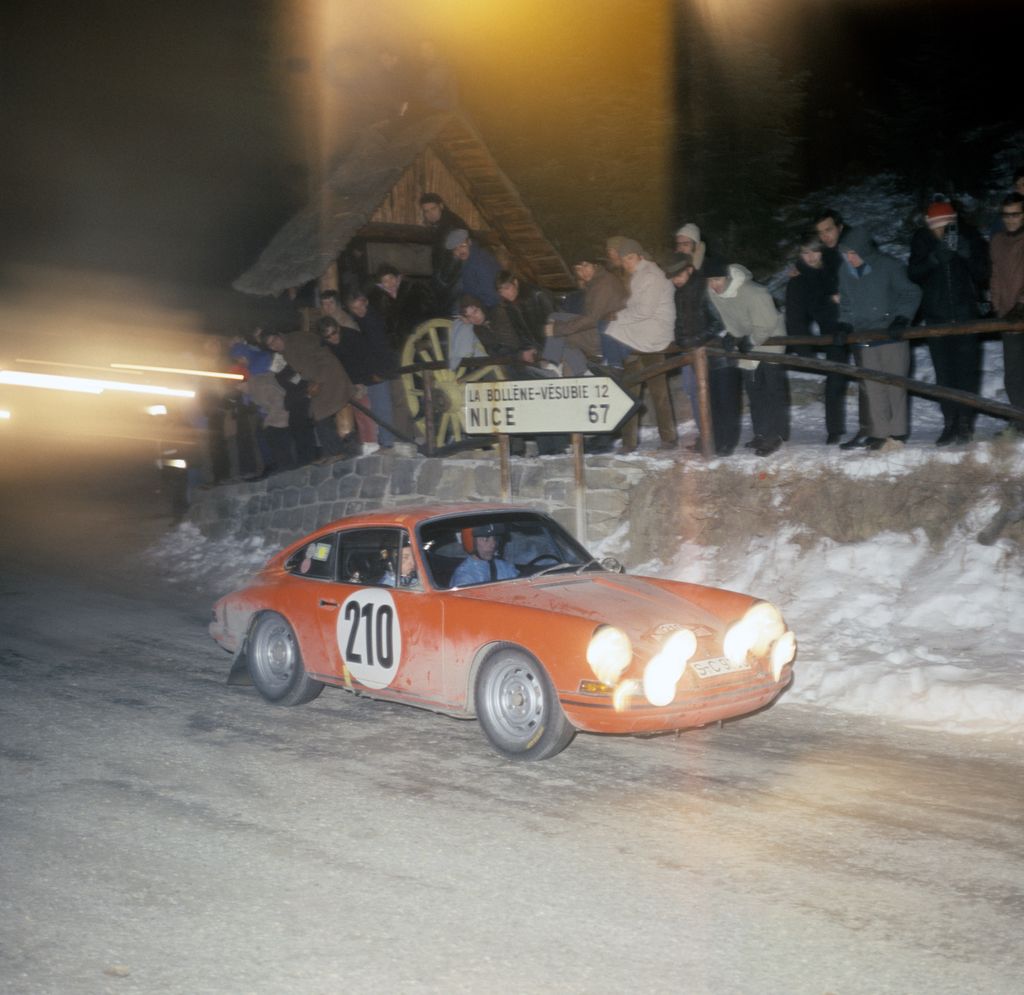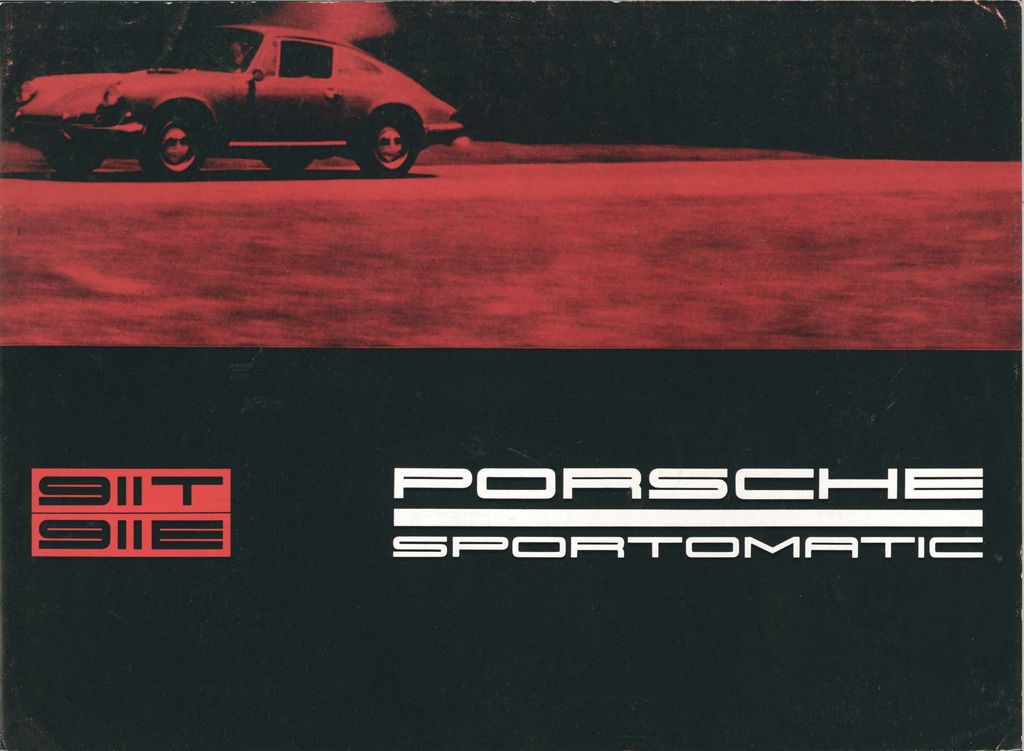
Porsche Press kit 1968 - landing page
Introdotta nell'autunno 1967 per il MY 1968. Snobbata dai puristi ma con la sua nicchia di estimatori, la Sporto ha avuto anche qualche avventura sportiva ad esempio giungendo prima nella 84 ore del Nürburgring del 1967 con Vic Elford, Hans Herrmann e Jochen Neerspasch.
.jpg)
The Sportomatic is a new innovation put out by Porsche. Now the idea of a hydraulic torque converter applied in connection with highly tuned engines became reality. This new kind of automation in power trains includes all advantages automatic transmissions as well as those of the regular four-speed Porsche transmissions.
The demand for automatics is a growing affair in our world. In the constantly swelling city traffic and that on the highways, with traffic jams common even to expressways, the automatic transmission takes the strain off the driver, allowing him to concentrate and, still, conserve his energy, but also reduces the tear in drive components of a high performance car. The design and character of the automatic, however, must be in balance with the desires put forth by a fast driver in reference to his fast and powerful machine. And it is here that the Sportomatic sits just right In the slow, stop-and-go, nervous traffic the driver need not shift and he can forget about clutching, too, since a torque converter takes care of that as it progressively transfers the engine torque and automatically adjusts itself to the given traffic situation.
Still needed for shilting gears at higher revs is the clutch, but the Sportomatic it works fully automatically.
The matter of driving away from a stop, or stopping, is simple:
To drive away - just step on the gas.
To-stop - just step on the foot brake.
The driver still has four forward speeds under his full control and he he can apply this feature when driving on open roads in a guick fashion, putting the power of his tuned six cylinder engine square on the road.
The shifting of gears when accelerating or braking is completely in the driver's hand. He shifts the gears in the precise moment he wants to, rather than having this done by the car at any time.
Uncontrolled or unwanted downshifts and upshifts with power surges to the rear wheels - typical of fully automatic trans missions and especially hazardous in powerful cars passing over slippery roads - are not inherent in the Sportomatic.
.jpg)
To start, you place the gear selector lever into neutral, pull the handbrake up, and-tumn the ignition key to enaaae the starter motor. (You can start the engine in the Park position, too.)
Push the gear selector lever into "D", release the handbrake, step on the gas and off you are To stop, just depress the foot brako pedal-the gear can remain engaged. There is no clutchina or shifting involved. In this gear vou can even exceed 60 miles per hour.
On open stretches you can kick these two gears around. In D4 you'll sail along with leisure. In D3 you can brake or dart away -sort of keeping one eye on the tachometer to keep the revs where they belong. You really can seldom be forced into shifting down a gear, yet you can drive in your customary manner since the gears can be changed with a wink of one eye.
The position for the more difficult tasks, such as gentile departure out of steep garage driveways found in some apartment houses, driving in mountains over snow 'n mud, or when forced to a creeping pace in convoys of slow cars.
You know this one. also the fact that it can be engaged only when the car has come to a stop.
In this position you block the transmission and rear wheels so that your car cannot be moved.
.jpg)
Two well proven technical designs combined into one: the torque converter and the fully synchronized, four speed Porsche transmission. Both are tough and simple units in concept and maintenance. The three main component units of the Sportomatic are the torque converter, the automatic friction clutch and the mechanical four speed transmission with parking lock. The hydraulic torque converter is designed along the and consists of two tori. That is, the driven torus and the drive torus. Between the two tori is the so-called stator which runs on a freewheeling device which allows it to turn in the forward direction only, i.e. in the direction of the two tori. The torque converter housing is filled with engine oil and maintained under pressure. When the engine turns the drive torus, its vanes push oil into the driven torus. Here, the movement of the oil is changed into power and the driven torus, also known as turbine, begins to turn along with the drive torus.
Oil exiting from the driven torus speeds into the stator on the way back to the driving torus. The vanes of the stator which is on a freewheeling device and cannot turn back, are positioned at a special oblique angle which guides the rushing oil into the driving torus at the most advantageous angle, thus actually propelling the driving torus and resulting in torque multiplication at the driven torus. The torque multiplication force is greatest when vehicle standing still and just about to move on, decreasing progressively to the ratio of 1 as the car gains speed. When the engine speed is increased and the driving torus turns taster than the driven torus, the stator action will increase the torque at the rear wheels. The greater the difference in speed between the two tori, the greater the multiplication effect, although within a short time the pump and turbine tori rotate at nearly equal speed and no torque multiplication takes place. At that time, the torque converter functions as a fluid coupling and the stator is rotating in the same direction as the two tori.
To change gears in a mechanical transmission it is necessary to break the connection between the engine and torque converter on one side, and the mechanical transmission on the other. Since it is not possible to disengage the engine from transmission at higher engine speeds when a torque converter is utilized, a mechanical friction clutch has been provided between the torque converter and transmission; the clutch operates automatically. Since a clutch pedal is not used, a vacuum servo motor is utilized with the help of engine vacuum. The vacuum flow between the vacuum motor and engine intake manifold is controlled through a valve. Since the negative pressure in the intake manifold is verv low when the gas pedal is depressed, and non-existent when the engine is standing still, a vacuum reservoir is included in the system and permits several gear shifts without assistance from the intake manifold. A microswitch in the gearshift lever controis the control velve and is activated as soon as the lever is touched by-hand.
.jpg)
W 14e
Dr.-Ing. h. c. F. Porsche KG
Stuttgart-Zuffenhausen
Printed in Germany
Subject to changes
Aug. 1967

Porsche Press kit 1968 - landing page

Brochure Sportomatic 1969

Porsche Press kit

Porsche Literature

Our Porsche Cars